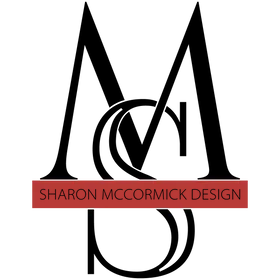In the Home: Bathrooms are the first places homeowners tackle for renovation
After buying a home, many new homeowners dive into a project. When faced with a bunch of different projects to choose from, where do most people start?
According to a study by Contractor Growth Network, most homeowners start in the bathroom. It makes sense. Many homes in Connecticut were built in the 1950s and 1960s. Oddly colored tile covers many of the walls and sometimes homeowners are blessed with a blue toilet or green sink. Pepto Bismol pink was also a common color.
After bathrooms, kitchens and basement remodels are the next most popular areas to renovate.
According to the study, the national average for a bathroom remodel is currently at just over $11,300, depending on the size of the bathroom. A half bath is much less expensive than replacing a tub or shower.
Custom vanities provide personalized storage. An extension allows for a make-up table for added function. The main floor tiles are installed in a pinwheel pattern, while the other tiles simulate a rug.
Sharon McCormick, of Sharon McCormick Designs, shared some tips for homeowners on how to get the most bang for your buck during a bathroom renovation.
“Make a list of what does and doesn’t work in your current bathroom as well as features you’d like to have,” McCormick said.
She suggested carefully planning your renovation. If you can keep your plumbing lines where they are, it will save you money. However “consider how happy you are with layout as you go about your daily routine,” she said. Sometimes it’s worth it for the added cost if it’s going to greatly improve your bathroom.
If you are a DIYer, check the latest building codes as you plan and pull a permit if the extent of the renovation requires it. If you don’t, you may run into problems when you sell your home in the future. Otherwise, hire professional help.
“The lowest quote is not necessarily the best quote,” McCormick said. “Quality is important to extend the life of your renovation.”
If you are being budget conscious, focus on the essential updates and repairs and then amenities. For instance, chrome is the least expensive plumbing fixture.
This 2-person shower creates two different experiences – a rain head on one side and a personal shower on the other – to accommodate each partner’s style. Be sure to include a bench in your shower!
“Wood finishes come and go, but painted cabinets and forever, style-wise,” she said. “Buy the best cabinets you can afford for longevity.”
McCormick also suggested shaker cabinet doors as they never look dated.
When planning, budget for any surprises. Some toilets require separate orders for a seat and a handle. Did the faucet come with a drain?
She also stressed determining your electrical and lighting needs carefully. Some of these items may include vanity lighting, ventilation, docking stations, recessed lighting, decorative lighting, heated floors, steam generator, towel warmers or headed toilet seats. Smart home features, audio and TV are extras that should be planned for.
Plan for the long term
You don’t look to redo your bathroom or kitchen very often. It’s not as easy as painting a bedroom wall and changing out a rug to change the look of a room.
“Grab bars, wider doors for wheelchairs and curbless showers will serve you well into the future,” McCormick said. “Be sure to put a bench in the shower. There are decorative grab bars on the market.”
Paint an off-the-shelf vanity and add fun cabinet hardware for a budget-friendly bathroom.
Maximize storage
You want to use what space you have in a bathroom the best you can.
“Consider adding a built-in linen tower with drop down hampers to keep the bathroom neat or create a recess between the wall studs.” she said.
Tiling your bathroom
Some tiles are not appropriate for bathrooms. Double check the ones you’ve selected are appropriate for the floor or the shower.
“Some tiles are labeled walls only because they are not slip-resistant,” McCormick said. “Inexpensive tile can be found in different sizes and installed in many patterns to make it look more interesting. Herringbone, basketweave, stacking and brick patterns are popular. If you’re using a contractor, be aware that simple patterns require less labor than intricate ones.”
Along the line with the correct tile, make sure you use a mildew resistant paint. Bathrooms get wet and wet makes moisture and mildew.
Lastly, don’t forget the finishing touches. These can include cabinet hardware, towel rings, towel bars, robe hooks, toilet paper holders, mirror, art and window treatments.



